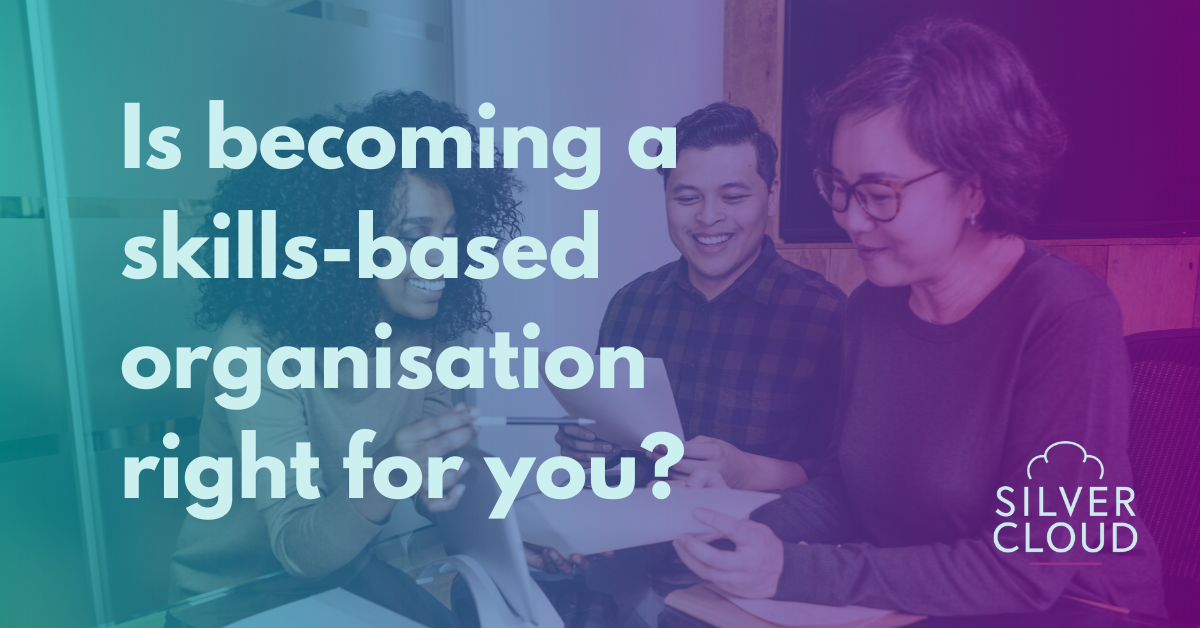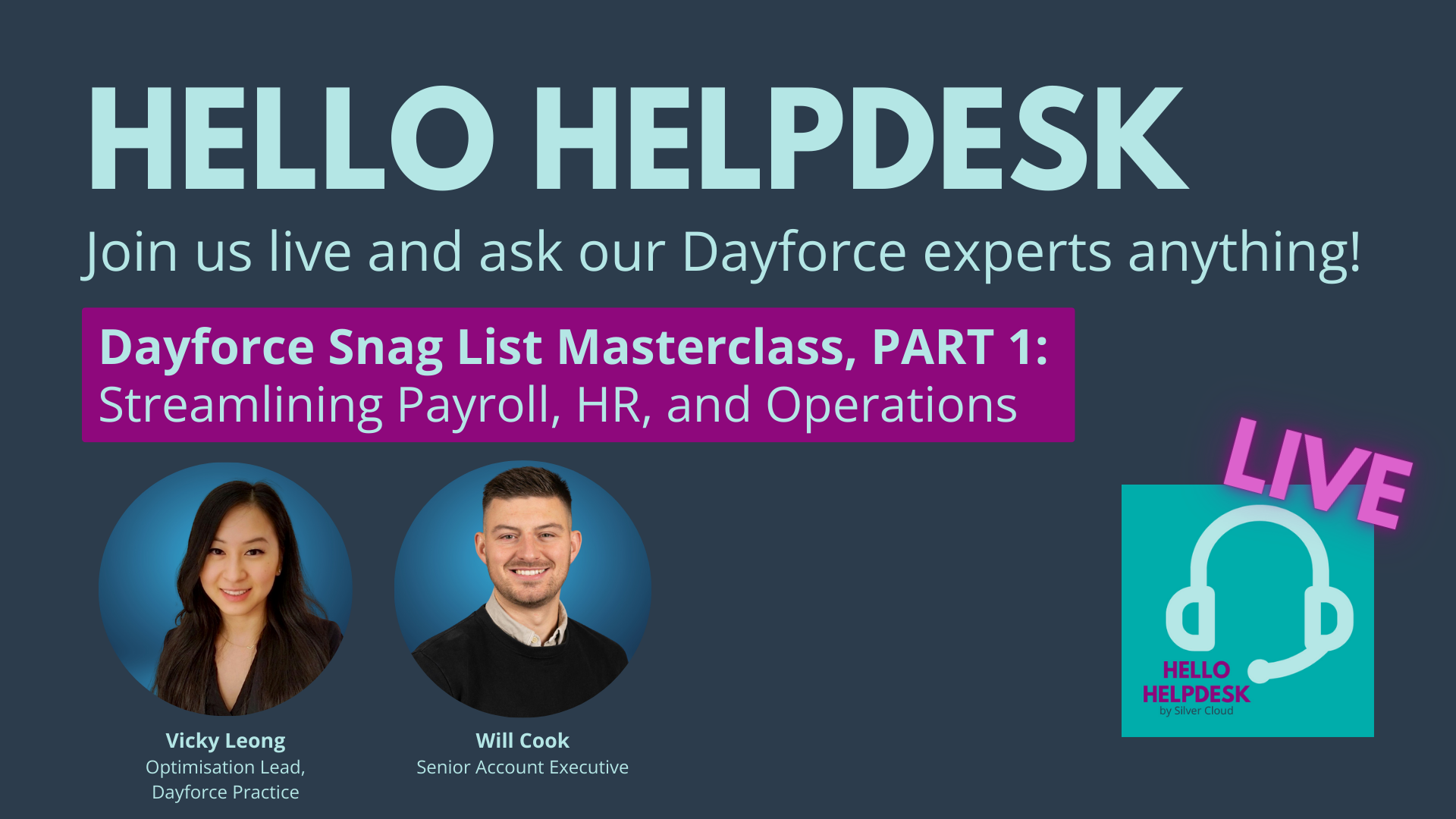HR & Payroll Technology | Glossary of Terms
by Admin
HR & Payroll Technology Jargon
A-Z Glossary of Terms
When it comes to HR and payroll technology, there are several terms you may come across during your selection and/or implementation. Not all of these will be familiar, at least not at first, so we've created a handy A-Z list of useful terms and phrases to help get you up to speed!
Simply click on the sections below to search for a particular word or scroll through this page for a description of what each term means.
Your A-Z of HR and payroll technology terminology
Glossary
A
ATS (Applicant Tracking System)
A solution to capture online applicant information and process them through the recruitment cycle.
API
API stands for Application Programming Interface. An API is a software intermediary that allows two applications to talk to each other. In other words, an API is the messenger that delivers your request to the provider that you're requesting it from and then delivers the response back to you.
B
Best of breed
A suite of independent software solutions that specialise in a niche area of expertise. Usually the software is bound together by integrations, so that end users are able to utilise the best solution for the task, but with seamless data flow across the HR function. The alternative to a best of breed setup is a fully integrated solution. Please see our FAQ’s for the pros and cons to each approach.
BYOD (Bring your own Device)
A term used to describe the growing trend of employee-owned devices within a business such as
smartphones tablets, laptops and other devices. Many employers have policies that govern the use
of employee-owned devices in the workplace.
BPO Business Process Outsourcing
Business process outsourcing (BPO) is the contracting of non-primary business activities and functions to a third-party provider. BPO services can include all or some HR and payroll tasks. BPO is also known as information technology enabled services (ITES).
Business Intelligence (BI)
An umbrella term that includes the applications, infrastructure and tools, and best practices that enable access to and analysis of information to improve and optimise decisions and performance.
C
Case Management System (CMS)
The system in which an organisation manages employee requests and enquiries. This would typically involve logging all correspondence and storing documents. In HR, this system would be used to manage pay disputes, disciplinaries, grievance and performance management dispute cases, amongst others.
Centre of Expertise (CoE)
Teams of subject matter experts that develop and hold deep expertise in their respective subject areas. CoEs set group strategy, policy and process for their respective area, and are accountable for all specialist activity in assuring quality, capability, standards and performance.
Cloud Technology
Cloud is a model for delivering IT services through the internet via applications (apps) and browsers, rather than through a local server. This means that users can access services from any location because the information is held in the cloud.
Cognitive Agent (AI)
A cognitive agent is an artificial intelligence digital assistant which can connect directly with applications, is able to ‘understand’ context and apply logic to conversations. Alternatives to cognitive agent include basic chatbot functionality or webchat with a ‘live’ person support.
Critical success factors
Any element of the User Journey which is necessary to take place in order for the actors involved to have an excellent, good or satisfactory experience throughout the process.
Customisation vs Configuration
Customisation involves extensions or modifications of a software feature that requires custom coding and implementation, while Configuration involves using tools already in the system to change its features. Cloud-based HR systems may be configured within certain parameters. Any customisations would generate additional cost and might affect the ability of the system to upgrade and continue to function seamlessly.
D
Design Principles
A set of high level guiding principles that will be referred back to throughout the programme. These set out expectations and standards for the quality and direction of the work.
E
Employee Portal
A secure site in which employees can find information and news about their organisation, its people and priorities. This portal should also include guidance regarding policy and procedure and a people finder
Employee Self-Service (ESS)
A web based interface that allows employees to handle many job-related tasks normally conducted by HR (such as benefits enrollment, updating personal information and accessing company information).
Employee Experience Journey Mapping (or User Journey Mapping)
Taken from marketing and customer service, the journey mapping approach is a method of mapping out the end-to-end experience, illustrating the steps the user/employee goes through in engaging with HR services, regardless of the access point or service provider involved. Journey mapping considers motivations and emotions as well as actions.
Employer Branding
This terms reflects promoting a company, or an organisation, as the employer of choice to a desired target group, one which a company needs and wants to recruit and retain. Often a joint effort between the HR and Marketing teams.
Enterprise Resource Planning (ERP)
A business process management software with applications for the management of multiple business functions including HR, Finance and Commercial. Traditional ERP providers include SAP and Oracle, who both provide a wide range of applications.
F
Flat file
A flat file can be used as a simple means of ‘integrating’ two business systems. A data file is extracted from System A, is temporarily stored on a server and then picked up and imported by system B.
Flexi time
Our flexitime system operates on the basis that staff members will work their contractual hours, but with the ability to work these hours flexibly with agreement of their head of section or assistant director.
H
Hosted Solution
HCM Vendor provides access to its software to be located and stored at a data storage facility; on the HCM Vendor’s servers. HCM vendor is responsible for infrastructure and software maintenance.
HRIS
A Human Resources Information System (HRIS) is a software or online solution that is used for data entry, tracking and monitoring of an organisation's workforce.
HR Target Operating Model
A high level representation of how HR can be best organised to efficiently and effectively deliver services for the organisation.
HCM
Human Capital Management - A series of processes and practises involved in managing an organisation's people resource.
I
Integrations
The ability of your HR database to link to other business systems, such as Finance, Learning Management Systems, Applicant Tracking Systems and Performance Management systems. (See also Integrated HRIS)
Integrated HRIS
Typically refers to software that allows Payroll, HR and Time & Attendance and possibly more functions to pass data between them without any re-keying of data or need for imports/exports. Typically done through the use of one data source (HRIS). (See also Unified HRIS solution strategy)
J
Job Family
Within role evaluation a job family is a group of jobs with common features such as involving similar work, training, skills, knowledge, and expertise. Although the level of responsibility, skill or competence required to do the work may be different, the essential nature of the activities carried out and basic skills used are similar.
K
Key Performance Indicators (KPIs)
Key Performance Indicators (KPIs) are a measurable value that demonstrates how effectively a company or department is achieving key business objectives. The KPIs applied to each User Journey have been designed at a process level and service level.
L
Licence
A software licence is a cost per user (employee, contractor, volunteer) to access the software. This is typically a recurring annual cost and is usually subject to inflationary increases for the length of the contract. NB. Review the contract terms to understand what the vendor defines to be an ‘Active User’.
M
Manager Self-Service (MSS)
A web-based interface that allows managers to handle many job-related tasks normally conducted by HR (such as time approvals, running reports, looking up information about employees).
N
Nondisclosure Agreement
A contract restricting an employee from disclosing confidential or proprietary information.
O
On-Premise/On Prem
Software that is installed and runs on computers owned and on the premises of the organisation as part of its IT infrastructure, rather than hosted and run remotely, for example in the cloud. On premise systems have traditionally been heavily customised to organisations' own business processes due to their static nature.
Outsourced (Providers)
A contractual agreement between an employer and an external third-party provider whereby the employer transfers responsibility and management for certain HR, benefit or training-related functions or services to the external provider.
P
Push Notification
A notification that is "pushed" from a server or application to the user interface on a mobile or desktop device. A breaking news notification on a mobile is an example of this.
Process Taxonomy
A structured list of HR processes, categorised into levels. Level 1 is the function, i.e. HR; level 2 is the process group, i.e. Joining Work; level 3 is the process subgroup, i.e. Recruitment; and level 4 is the process title, i.e. Sift Applications. The Process Taxonomy covers all aspects of HR activity and delivery, and is not limited to HR transactions. The level beneath the taxonomy involves process mapping.
Professional Services
The consultancy services required to support the implementation of the software in scope. Ususally costed in addition to the software licence.
Predictive Analytics
Predictive analytics models take patterns found in historical and transactional data to identify potential risks and opportunities, and predict future outcomes and trends for your business. For example the evaluation of how average employee tenure and development data may be coupled and used to predict employee turnover.
R
Request for Information (RFI)
A document an organisation sends to a vendor inviting the vendor to submit information about a product or service.
Request for Proposal (RFP)
A document an organisation sends to a vendor inviting the vendor to submit a bid for a product or service.
Request for Quote (RFQ)
A document an organisation sends to a vendor inviting the vendor to submit a quote for a specified project.
Return on Investment (ROI)
A means of measuring the benefit’s or financial gains from an investment in a HR system.
S
Scalability
The degree to which a computer application or component can be expanded in size, volume or number of users served and continue to function properly.
Service Delivery Model
A high level representation of how HR delivers its services, from self-service portals and chat boxes, through call centre query handling, complex casework, strategic business partnering and communities of expertise. The Service Delivery Model, or SDM, outlines the levels or 'tiers' of interaction and sets out the key enablers such as governance, technology and supplier management.
Shared Services
The consolidation of business operations used by multiple parts of the same organisation, or by multiple organisations. Shared Services can be highly cost efficient because they centralise spend and resourcing on transactional activity. Activity typically includes HR, payroll, finance and procurement.
Self service
- see employee self service (ESS) & manager self service (MSS)
Single Source of Truth (SSOT)
Single source of truth (SSOT) is a concept that an organisation can apply as part of its information architecture to ensure that everyone in the organisation uses the same people data. When an organisation applies a SSOT approach, people data is entered once in a system of record (HR Database/ HRIS) and is then automatically shared with other necessary business systems, such as payroll, IT (for Active directory), Finance etc without re-keying, which is open to error and duplication.
Software as a Service (SaaS)
Software-as-a-Service', is a licensing and delivery model where software is licensed on a subscription basis and is centrally hosted, rather than hosted on an organisation's servers.
This offers a range of benefits including reduced total cost of ownership, reduced need for IT within organisations, greater flexibility and regular upgrades that keep the software up to date. SaaS is typically accessed by users through a browser. SaaS and Cloud go hand-in- hand.
Systems Integrator (SI)
A company that assists organisations in combining different software products from multiple vendors. An SI may also be able to offer certain customisations for specific applications. SIs operating in government include Fujitsu, Certus Solutions, Capgemini and Kainos.
T
Total Reward Summary
An employee document outlining the complete pay package they receive on an annual basis, including all forms of money, benefits, services and in-kind payments.
U
User
A ‘user’ typically defines an active record on a HRIS (regardless of how detailed or complete that record is) . Some vendors will also class leavers as active, so it’s always best to check the contract.
User Interface (UI)
The visual part of an application or system through which a user (candidate, employee, line manager) interacts with software. This aspect of the system is most closely associated with the user experience.
User Journey Mapping (or Employee Experience Journey Mapping)
Taken from marketing and customer service, the journey mapping approach is a method of mapping out the end-to-end experience, illustrating the steps the user/employee goes through in engaging with HR services, regardless of the access point or service provider involved. Journey mapping considers motivations and emotions as well as actions.
Unified HRIS solution strategy
A “Unified” HRIS solution strategy is one involving an end-to-end suite designed to manage the entire life cycle of an employee within one integrated system.
Need to talk people tech? Book a call at a time to suit you
Whether you need a review of your current solutions, are thinking about going to market or need support to manage your implementation project, we can help:



